Published December 9, 2020

SURVIVAL OF THE FITTEST
How COVID-19 sparked a gym crisis in New York State
Stony Brook School of Journalism—Class of 2021🎓
Wash. Spray. Wait. Wipe. Repeat.
Wash. Spray. Wait. Wipe. Repeat.


“Freedom. Freedom to work out if you want to improve your health and increase your immune system, or freedom to stay home,"
—Jason Crippen, Herkimer Police Department
Making gains in New York State hasn't been easy since March 16. Here's why:
STIGMA.
In a COVID-19 world, the consensus around gyms is that they're unsanitary;
and in New York Governor Cuomo's words: Dangerous.
So why would anyone want to risk catching the coronavirus?
For one gym-goer, the answer goes beyond time, money, and borders.
SPEAKEASY GYMS.
AnyTime Fitness
access key

WATERBURY, C.T.— It’s 3 A.M. on Aug. 6, and AnyTime Fitness in Waterbury, Connecticut, is living up to its name.
Who could be here at this hour? A New Yorker — that’s who.
With one final extension of his arms, Christopher Tenesaca
lets out a huge exhale just as his barbell thuds against the weight rack.
He stands up, and with one quick survey of the empty room,
followed by a swig of water, sits back down for set number two.

Waterbury, C.T. on Aug. 6

Christopher Tenesaca, a 23-year-old aspiring US Army recruit, putting his AnyTime Fitness pass to full use.
Over the summer, Tenesaca, an aspiring U.S. Army soldier, drove by dozens of gyms in the tri-state area looking to get his hands on any gym equipment he could find. “I’ve grown out of my home weights. I need to be lifting heavier,” the 23-year-old from Ossining, N.Y., said.
He's tried calisthenic exercises— which are strictly bodily exercises involving no weights. But after a six-month absence from his "muscle factories," or gyms, he says he needs a new challenge.
To stay fit, Tenesaca plays soccer at the turfs fields in Ossining,
but his sprints just aren't the same. His shots not as potent.
At 5'7" and 150 lbs, he's trying to gain mass for boot camp;
not shed it.
His solution? Speakeasy gyms—a place where people go at night to work out in peace. These “secret” gyms are first-come, first-serve for those willing to wake up early enough to use them.
“It’s the only way I can use the machines I want,” Tenesaca said. Working out at these hours helps avoid the hassle of scheduling appointments at fitness centers, which only allow people to work out for a limited amount of time, he says. He wants to dodge the traffic of people driving to gyms— and those working out inside of them.
Ever since March 16, when Cuomo closed gyms in New York, Tenesaca sought for a place to workout. Since July, he's completed the drive to Waterbury around four times a week. The hour-long road trip is a significant expense on gas but pays off, he says. He's willing do whatever it takes to keep his muscles—his “gains,” he calls them.
After three weeks of this method, on Aug. 24, a breakthrough developed upstate. In Albany, Governor Andrew Cuomo announced that select gyms could reopen— but at 33% capacity. While restricted, the sound of gym doors opening was all Tenesaca needed to hear.
This reopening painted a new question for speakeasy gym-goers:
Where to: The gym? Or to sleep?
For Tenesaca, speakeasy gyms had become the norm.
The convenience of his graveyard shift work schedule meant his night owl lifestyle
wouldn't interfere with his gym routine.
He'd continue to travel AnyTime Fitness at 3 A.M., but one closer to home.
It’d be a two-minute drive this time, not a 63-mile one.
This would be the case all the way until the virus cleared out. A simple plan— or so he thought.

AnyTime Fitness in Ossining, N.Y. on Nov. 9, 2020.
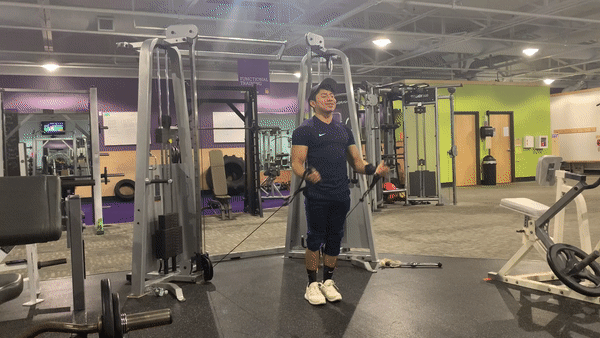

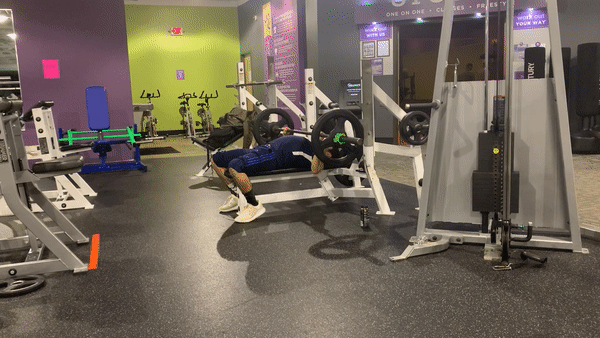

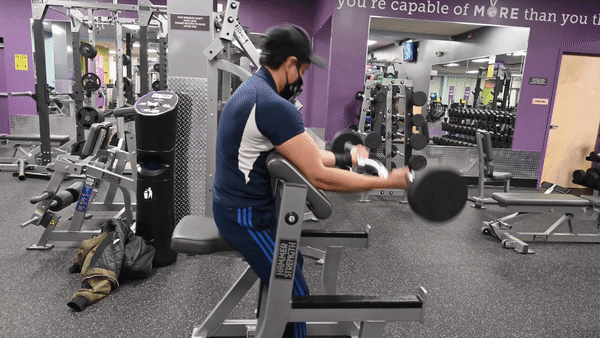

Waterbury, C.T. on Aug. 6
Cliffside Park, N.J. on Sep. 14
Pleasantville, N.Y. on Nov. 8


Waterbury, C.T. on Aug. 6, at 4:00 A.M.
BACK TO SQUARE ONE.
OSSINING, N.Y.— Just when Tenesaca was returning to his normal fitness regimen, news broke out that stricter gym regulations would send New York back into lockdown.
On Nov. 11, New York Governor Andrew Cuomo tightened his stranglehold on gym restrictions by implementing a 10 p.m. curfew to gyms statewide. Since then, he's even hinted at possibly closing gyms all together.
The closures come after a much-anticipated rise in COVID-19 cases across New York State, Cuomo warned earlier in August. Back in Tenesaca's hometown of Ossining, the virus is rampant.
In "Orange zones," constituted as areas at mild risk of becoming hotspots for the virus, gyms must close. Across Westchester county, 9% of the population on average is testing COVID-positive— inching closer to that status. But when Cuomo re-opened gyms on Aug. 24, COVID cases had dropped to all-time low figures. What happened?
According to Cuomo back on Aug. 9, he anticipated this spike in positive cases by labeling gyms as 'dangerous.'
Now, he's reiterated his point by saying, "Experts have said those businesses carry the greatest risk of spreading of the virus," in a press release on Nov. 25.
He adamant on changing his stance.
"New York follows the science," he tweeted on Nov. 11
Select gyms would reopen starting Aug. 24, but all indoor fitness classes must wait until at least Sep. 2.
However, a lack of justification for these two weeks of lost membership, advertising, and business functionality were a breaking point for over 1,500 gym owners across the state.
One of them being Charlie Cassara— founder of the New York Fitness Coalition. The organization pledges to fight for small businesses that closed during the pandemic. His two Long Island fitness centers both closed on March 16, when Cuomo mandated the closure of all facilitiies in New York.
For Cassara, the financial overhead of over $150,000 invested into the gym, was just one of many concerns.
He explains why the Coalition plans to take legal action against Governor Cuomo:
He also believes that Cuomo's decision to close gyms had negative repurcussions with regards to mental health.
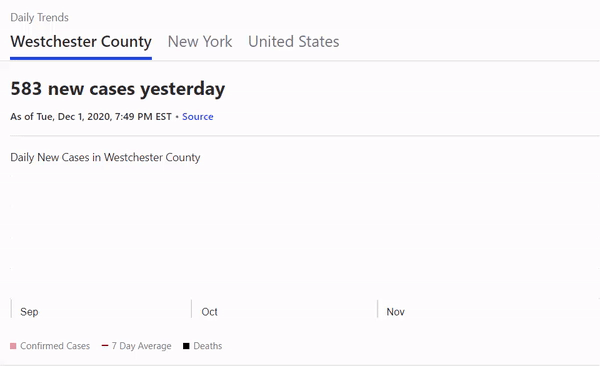
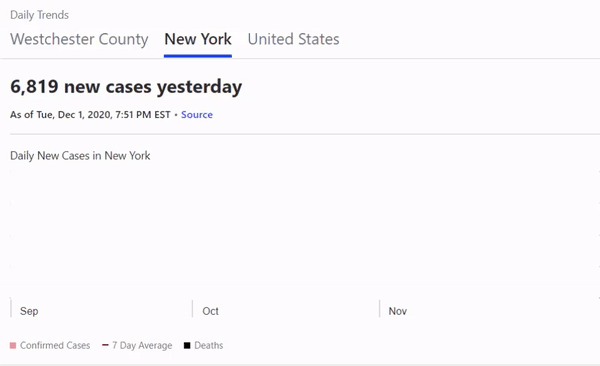
Side-by-side comparison of positive COVID-19 cases in Westchester County (left) and New York State (right), as of Dec. 1, 2020 [Source: Weather.com]
WESTCHESTER COUNTY
NEW YORK STATE
This rhetoric, according to one gym owner, is one of many reason Cuomo is being threatened gym-owners with lawsuits.
One reason is because of how Cuomo decided to reopen gyms:
ARE GYMS ESSENTIAL? is it too late?

On Nov. 4, 2020, Charlie Cassara, founder of the New York Fitness Coalition, explains why his organization plans to file a lawsuit against Governor Cuomo.
Cassara says gyms are an Essential service, which were given the green light in Phase 2 of the reopening process. "But what does he define as essential?" he said in regards to Cuomo, who opened gyms late in Phase 4.
"What essential means is to give the public what the public needs. Those who fight depression; who need a sense of community— Comorbidities. Fitness center fight against that."
"We're eight months in. How many people could we have saved?" he asked.
And he's not alone. On Oct. 15, Emicity Research published its “California Exercise and Wellness Report,” which tested 2,400 subjects pre-and-post quarantine on their on mental and physical health.
Since exercise is clincally-proven to be a mental rehabilitation practice, Cassara hinted that the 170-day shutting down of fitness centers in New York may have had any of the following side-effects →
.jpg)
MENTAL HEALTH

Cassara details why he believes gyms are an essential service— but it might be too late.


Findings from the 2020 California Exercise and Wellness Report, which found worsened mental health resulting from lack of exercise. [Emicity Research]
The study found over 54% of subjects reported a decrease in mental health— roughly 1,300 people.
But, those who refute the idea of gyms being essential say there are alternatives: ₁calisthenics, and ₂home gyms.
ALTERNATIVES
In a study, 2,000 Americans said that gyms were obsolete during the pandemic, with three in four of them preferring home workouts instead.
These exercises include calisthenics such as: push ups, sit ups, and even yoga.
However, not all exercises serve the same purpose.
Exercise simply means physical activity that burns calories.
But not all calories were made equal.
Cardiovascular activities such as: running, biking, or sports, involve aerobic exercises. They require oxygen to pump blood to the muscles.
One professional soccer player, 19-year-old Joost-Olan Sheehan, has been training this way since the start of the pandemic.
He does Plyometric training, a mix of exercises such as burpees, situps, pushups, or any explosive exercise over a short period that puts stress on the muscles. These exercises provide intense workouts in reduced spaces.
“Intense exertions of maximum muscular capacity in short bursts allow for muscle fibers to tear, lead to muscle growth,” Sheehan said.
However, for bigger muscle groups, such as quads and calves, which are essential to soccer, he prefers to do weighted squats. But he has no access to them from home. As a result, his body is losing mass.
“Muscles shrinking is something I worry about,” Sheehan said. “I’m used to lifting heavy weights at my university and training with the school team for two hours a day three times a week. But now I’m stuck at home.”
Soccer players such as Sheehan and Tenesaca tend to stay lean year-round. Their bodies are conditioned to be light for speed and agile movement. Therefore, muscle mass is hard to retain—even harder when they aren't be activated by specialized gym equipment.
One costly alternative is to build a home gym with equipment. Sheehan can't; nor can Tenesaca.
But one Stony Brook physics major already has.
"JUST DO CARDIO"

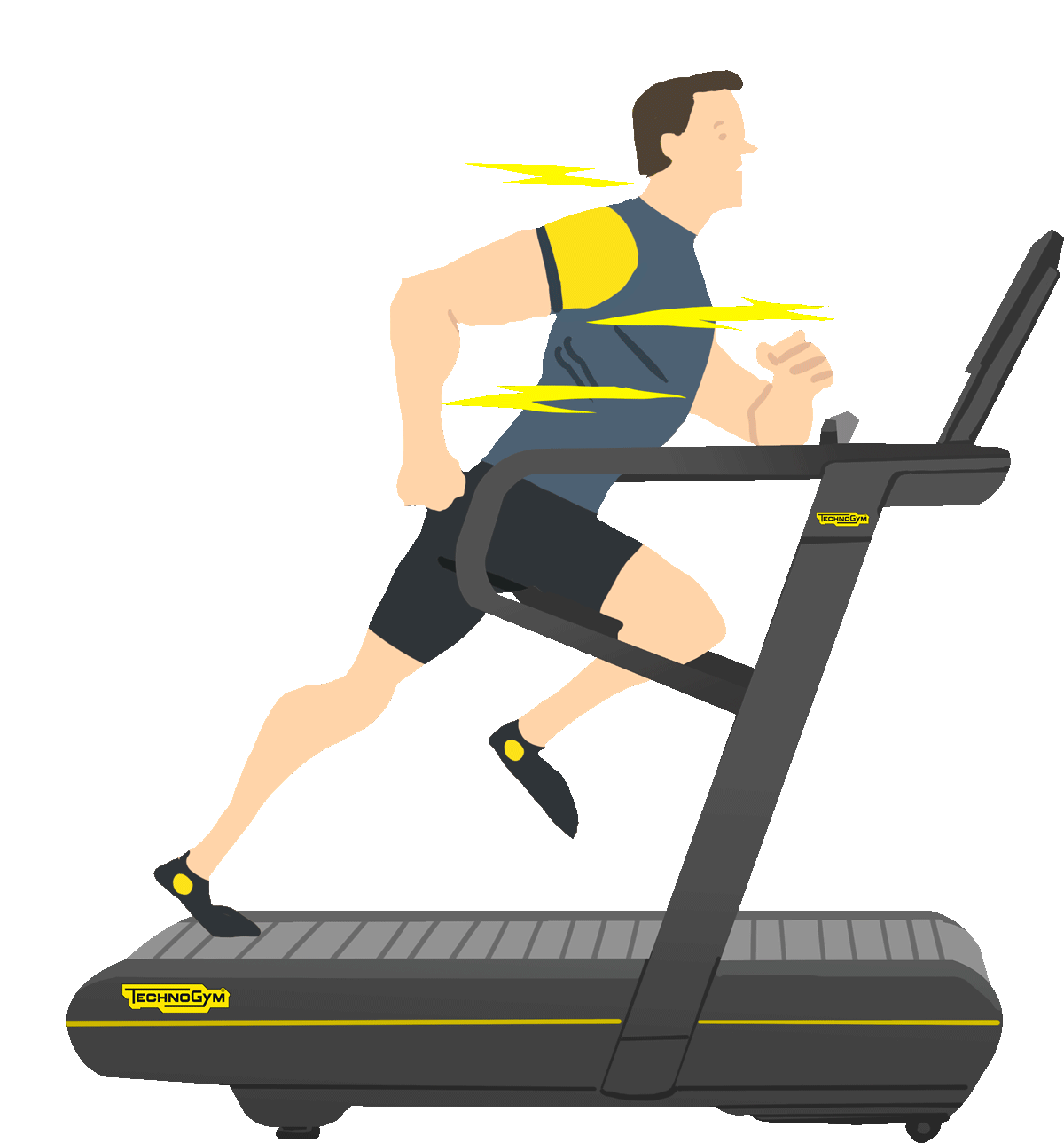
HOME GYMS.
Benjamin Shevah is a graduating senior at Stony Brook University, who spent more than $5,000 in 2019 in order to build his home gym, composed of acrylic weights and steel frames.
Upon stepping down into his basement home-gym, one brand of equipment stands out the most: Rogue. The fitness company, alongside Peloton, saw sharp increases in stock prices during the height of the pandemic.
In April, online gym equipment sales skyrocketed. Dumbbells, squat racks; pretty much anything you could get your hands on was sold-out the moment it was listed onto Facebook marketplace. New or used, the demand for workout equipment was high, while supplies were low— and Shevah knew it.
“I seriously thought about selling my gym mats. I bought them new for $50 each, and people were offering me double that. Used. During a pandemic!” Shevah laughed.
As a result, Facebook marketplace vendors started flipping weights during the height of the quarantine to maximize a profit.
“A pair of 15-pound dumbbells has been harder to track down than toilet paper at the beginning of lockdown,” one forum user said, in regards to purchasing Peloton weights.
That’s when Shevah decided to sell his squat rack. Once an offer of $1,500 came through from a buyer on Facebook marketplace, Shevah waved goodbye to his two-year-old gym set.
But while Shevah voluntarily made a profit on his own gym equipment, other small businesses were forced to sell off their weights— whether they wanted to or not.
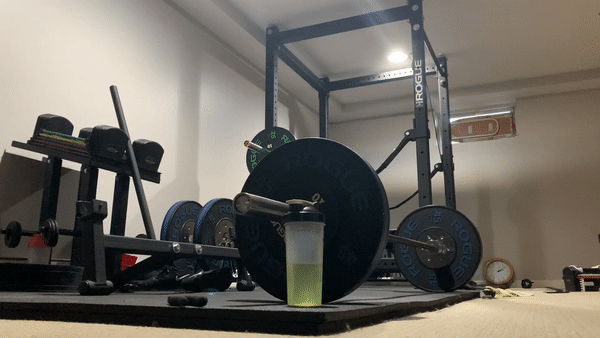
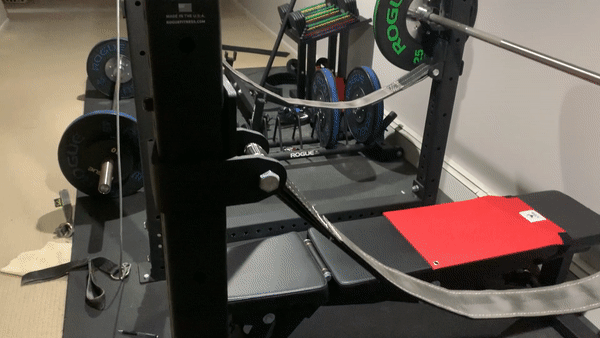
CLEARance.
One of them was gym owner, Derek Gelato, co-founder of Thrive Fitness in Menands, N.Y. He sold equipment during the quarantine, partially because of necessity and demand online.
The overhead and expenses of running a gym saw Gelato with a decision whether to sell to remain minimal or sell his entire inventory. “I was only willing to let go of so much,” he said.
The devastating financial implications of the pandemic saw huge layoffs and, for three months, a drop to 0% membership.
“Here at Thrive, we do small group training, and one-on-one personal training, which became completely zero. We lost about 40%— almost 50% of our member base. So we basically suffered like a close to 70% revenue off,” he said.
Government subsidies were key in mitigating the financial blow of the quarantine. The Paycheck Protection Program (PPP), a loan granted by the Small Business Administration (SBA), helped keep businesses like Gelato’s staffed during the COVID-19 pandemic. “The PPP was offered within certain amounts, at the time of use, specifically for payroll and rent,” Gelato said. But the help wasn't universal, he says.
“My honest feeling is that there should be divisions in how gyms are classified. I think that different regulations should be expected and enforced based off of what capacity. I don't know that it should have been required for them to hold off for as long as maybe the Big Box gyms.”
The decision to sell came from Cuomo’s decision to reopen gyms with restricted entry.
“When you’re running at 33% capacity, you only need 33% of your equipment,” he said.
HOw The PPP failed.
Charlie Cassara agrees. He explains why small businesses were failed by the PPP.
One former employee of his, Angelo Brussich, can attest to the financial hardships endured during the quarantine. He saw first-hand the effects of furloughs and cuts that small businesses made.
JOBS.
Brussich is a bodybuilder with 7-years of experience, much of which is from working out at SC Fitness in Farmingdale, N.Y. But on March 16, he found himself without a job, or a place to work out, once gymnasium doors across New York State unanimously slammed shut.
The closure of “muscle factories” due to quarantine had physical deterrents on his progress as a lifter.
“I didn't lose muscle mass, because I had equipment at home, thankfully. But I know a lot of people who lost some strength, and I even felt it a little in myself early on. For the first couple of months, I had to modify my percentages because 80% didn’t feel like that 80% anymore,” he said, regarading his dip in performance.
ventilation. THE SOLUTION?
While SC Fitness and other small gyms are following CDC guidelines, one concern related to hygienic practices within gyms is not touch-based sanitization, but air-based.
“Ventilation, as far as I've come to understand about COVID and what the risks of it are, is critical in the way our space is set up— with a 20-foot ceiling,” Gelato added.
“In an HVAC system that's been equipped with the MERV-13 air filters, we have the doors open so we can filter out what we can. At least on our end, I say that I feel pretty confident about what we're doing to practice safe measures here.”
But Cassara wants to dispel this "myth" once and for all.
Nevertheless, if COVID is present in gyms, the danger of the respiratory disease, at large, is within how casual the virus can be spread.
At Columbia University, Dr. Elaine L. Larson was a member of the CDC and specializes in health-care-associated infections. Her prior research includes a study on Preventing Viral Respiratory Infections. When illustrating the danger of previous pandemics, she describes the unique but detrimental outlier that is the coronavirus.
Cassara explains why ventilation is smaller gyms isn't inferior to that in larger gyms.
“Back in 2010, the swine flu was an influenza that spread like wildfire. The coronavirus is another type of flu, but it has such casual symptoms. That’s what makes it so dangerous,” she said.
In regards to the tell-tale signs what causes the virus, Larson said, “Nobody knows for sure, but clearly, primarily, it’s from the respiratory tract. So breathing. That's why, for example, singing in a choir is one of the worst things you can do during a cold because you're spraying all over the place. The same in the gym, if you're running, panting, all that stuff, then there's more respiratory spread. So that's the biggest thing.”
In regards to physical cleaning, Larson added that, “It's important, but that's a minor motive spread compared to the breathing.”
A fellow virologist, Jason Tetro, agrees. The Canadian microbiologist with 30 years of experience says proper ventilation is just as crucial as avoiding skin-contact.
HYGIENE. KEEPING GYMS CLEAN POST-COVID.
“When droplets of sweat hit the rubber surface of the weights, they prop up into a ball until skin makes contact. It permeates the skin and can lead to infection. While COVID is a respiratory disease, we can’t forget to cough into our arms instead of our hands. We touch our face 16 times every hour. So there's a high likelihood that that will find its way inside your nose or mouth.”
This aligns with protocols from WHO, which published that, “If virus-carrying droplets ‘generate microscopic aerosols by evaporating, someone could inhale the aerosols and become infected. But it remains unknown if such aerosols would actually carry enough viable virus to cause infection.”
In the field of human behavioral cleaning and hygienic practices, Dr. Eiger, who works as a Behavior Analyst in Cleanliness, published a study that measured the cleanliness of gyms.
“We used this scale called the ‘grossness factor.’ We wanted to show people what they’re touching and taking home every single time they go to the gym.”
“Body secretions can contain germs — viruses,” he said. “Why are people not cleaning? How do we improve cleaning behavior? Is simply putting spray on a paper towel enough to make it safe?”
But Eiger thinks people will eventually go back to their old ways. “Once the pandemic clears up, people won’t be wiping down the equipment as much. But I hope that’s not the case.” Dr. Eiger says an “increase in attempts to clean, empirical evaluation reasonable to suspect we'll go to default levels.”
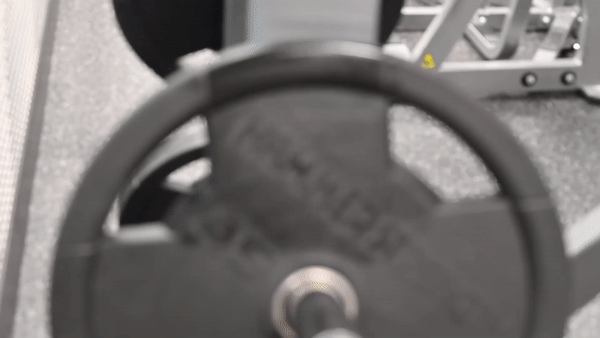

FUTURE OF FITNESS. WHAT'S NEXT?

In July, one gym owner, in an attempt to cut his losses, thought about reopening his gym illegally for the public to use. Jason Crippen, a police officer, voiced his displeasure with Governor Cuomo’s decision to close gyms.
“Freedom. Freedom to work out if you want to improve your health and increase your immune system, or freedom to stay home," Crippen wrote on Facebook on May 5.
By Dec. 31, over a quarter of all gyms in the country will have closed, not due to the pandemic, but the financial hardship that comes with it. But with a relapse in coronavirus cases over the past month, the due date for when gyms are set to reopen at full capacity is indefinite.
Is this our new normal? If so, then gym-goers will have to lift themselves from the depths of this pandemic and maybe some dumbbells for good measure.
Reporting outside of LA Fitness in Farmingdale, Oct. 11, 2020, after their national closing times were pushed to 5 P.M.
🏷️ Tags: #gym #covid19 #coronavirus #newyork #cuomo #orangezone #hotspot #westchester #cassara #coalition #NYS #NY #vaccine #COVID #reporter #journalist #journalism #broadcast #standup #report #article #fitness #training